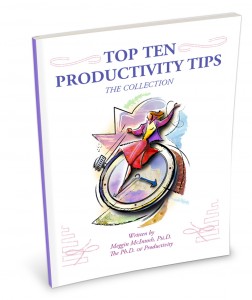Getting “Unstuck” When You Get Stuck in Your Writing by Meggin McIntosh, PhD
 Do you ever get “stuck” when you’re writing? If you are a writer, of course you do. Here are ten tips to help you get unstuck.
Do you ever get “stuck” when you’re writing? If you are a writer, of course you do. Here are ten tips to help you get unstuck.
-
Go for a walk. There is something about moving your physical self that can help your brain also get moving.
-
Start writing at a difference place in the manuscript. Sometimes you are just stuck right where you are. Moving to a different paragraph, different section, different chapter, different character (or any other different place) can move you from stuck to “unstuck.”
-
Reread what you’ve written (not to edit) but then keep going with the flow you’ve created. If you are stymied where you are, then start back at the beginning of the piece (or somewhere earlier than where you are “stuck”) and just start reading. Read for the flow, not to edit. Then wherever the flow takes you, keep writing.
- Ask someone else to read what you’ve written to give you suggestions. Just send your piece along to someone and ask if he/she will give you some ideas related to what you’ve been writing. It’s the fresh perspective that may be what is needed. Or, maybe it is their encouragement or their questions. Just ask and then listen and go with whatever it prompts in you.
-
Breathe. Stop. Breathe in. Breathe out. Repeat. Get oxygen to your brain and see what happens. It is quite remarkable sometimes.
-
Mindmap. As a huge fan of mind mapping, I hope you will give this one a try. You can just sketch out your mindmap on a piece of paper or use a software such as XMind. Using a different kind of thinking and a different part of your brain to consider your ideas may be just what you need to move forward.
-
Open up a new page and start writing from there. Staring at a page (or screen) that is clogging up your thinking does not help. Get out a new pad of paper (Levenger is my favorite) or open up a new document and start fresh. Just start and move forward.
-
Look up some of the words you’re trying to use in Visual Thesaurus. Often, if I will just look up some of the words I’m using in a thesaurus, it gets my brain juices flowing and then gets my writing flowing. I don’t know how that works exactly, but I’m happy that it does!
-
Look up some of the words you’re trying to use in the dictionary. Because you are a writer, you are using words. Accessing a word tool makes a great deal of sense. Play with words and see if that doesn’t spark some excitement and break through your blocks.
-
Use a different media, e.g., marker, Excel, pencil. The idea is to shift something to see if you can get unstuck. Get a box of 64 Crayolas, cool markers from your favorite office supply store, an Excel spread sheet, or anything other than what you usually use. To break the logjam, you have to try something different. An alternative media may be just the ticket.
When you write, sometimes it flows and sometimes it doesn’t. When it doesn’t, use one or more of the tips I have suggested and see if that doesn’t get you writing again. Hey! It’s worth a try, right?
© Meggin McIntosh, PhD (also known as “The PhD of Productivity”®). One of the ways that you can learn from Meggin about productive writing is through her 30 Articles in Just 30 Days).
 If you liked these tips and would like over 560 practical, immediately-implementable tips to read, print, and/or post as reminders, then you will want the Top Ten Productivity Tips – The Collection, available to access and download right away! Inside this full-color, 108-page productivity manual, you’ll find several hundred tips covering topics such as meetings, workspace organization, planning your day, effective delegation, and how to keep your mind focused on your work. With these clever tips in hand, you’ll be more peacefully and predictably productive than you’ve ever been.
If you liked these tips and would like over 560 practical, immediately-implementable tips to read, print, and/or post as reminders, then you will want the Top Ten Productivity Tips – The Collection, available to access and download right away! Inside this full-color, 108-page productivity manual, you’ll find several hundred tips covering topics such as meetings, workspace organization, planning your day, effective delegation, and how to keep your mind focused on your work. With these clever tips in hand, you’ll be more peacefully and predictably productive than you’ve ever been.




